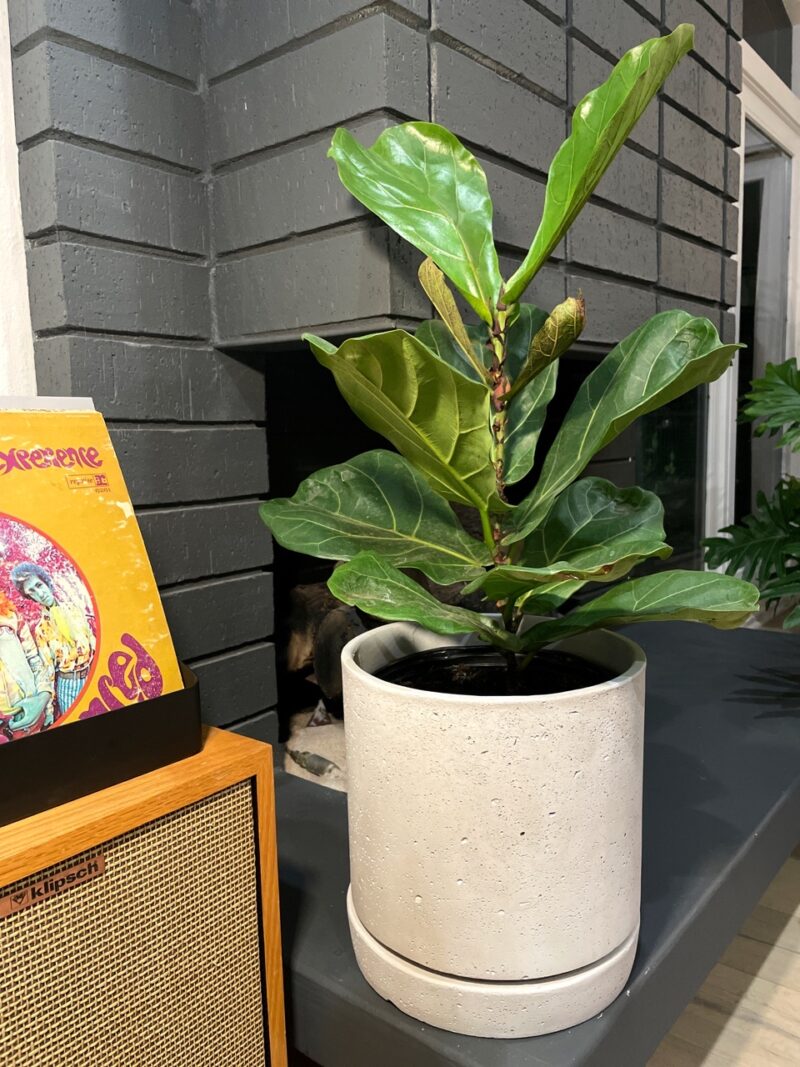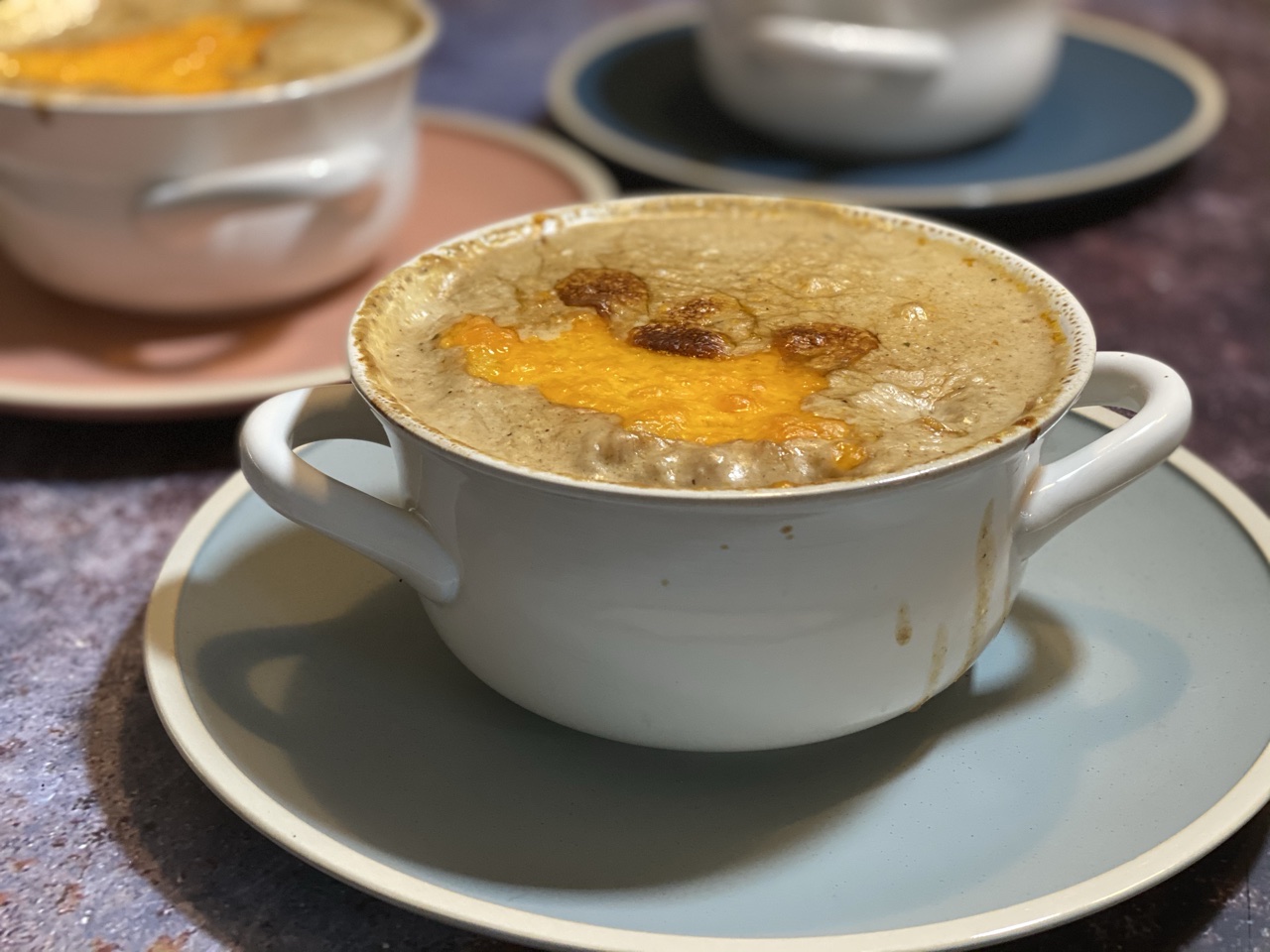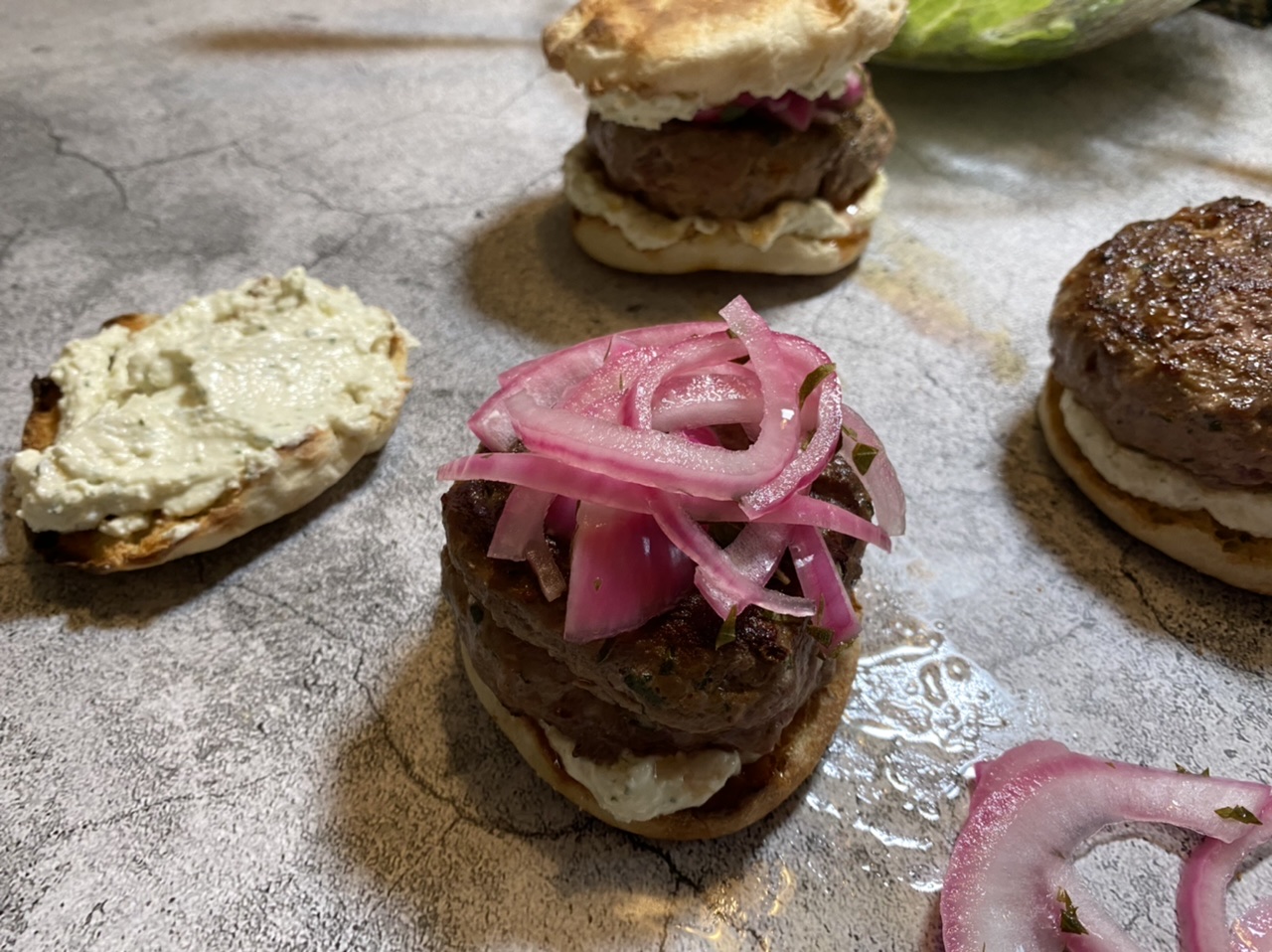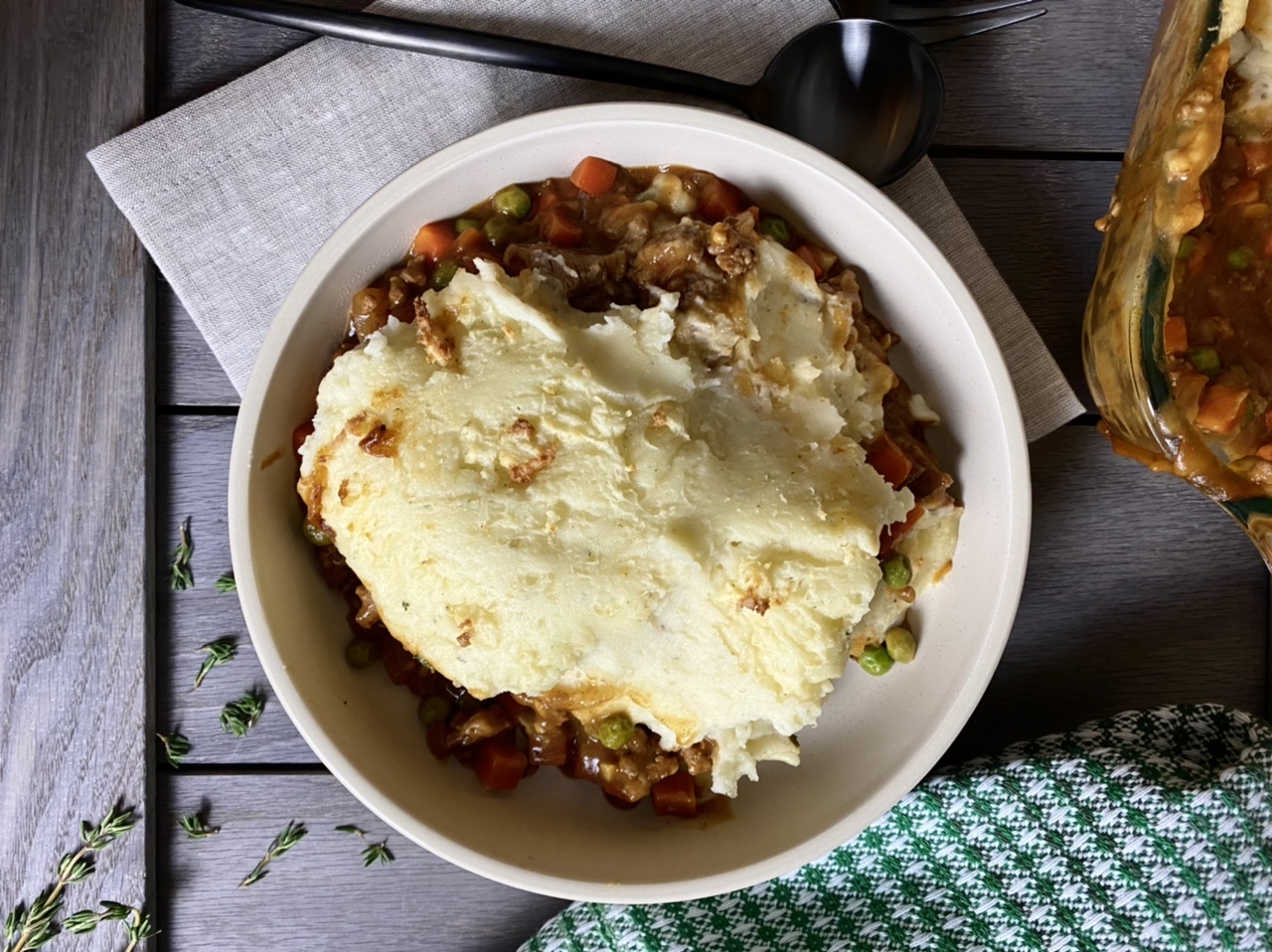With the growing enthusiasm for houseplants, which has reached a fervor during the pandemic, comes an almost overwhelming number of choices not only in what kind of plant to get but also what to put it in. Through much trial and error, I’ve learned that aside from picking out the best plant for your space, the next most important thing is picking out the right planter or pot for your plant.
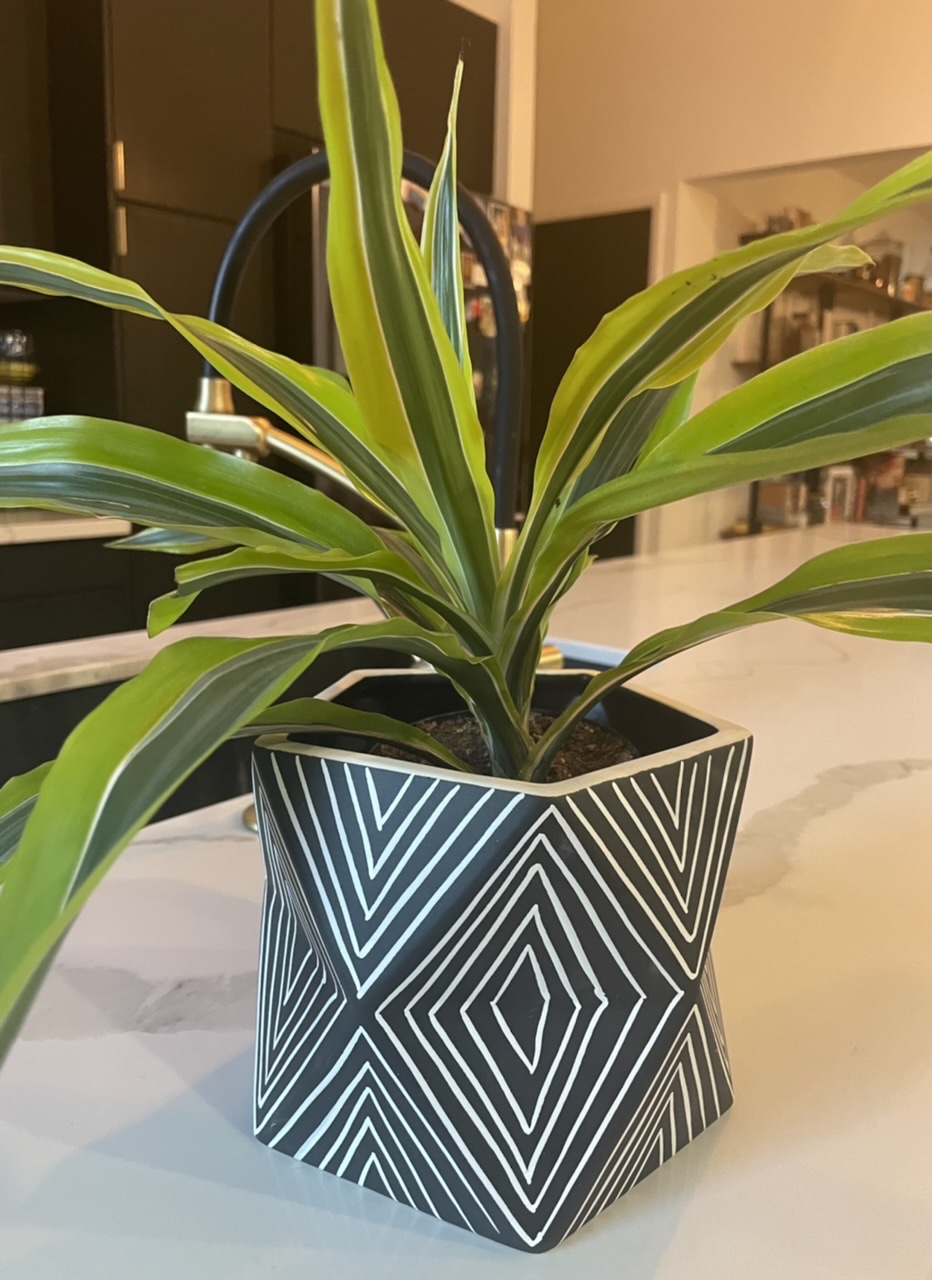
I’ve had so many experiences of falling in love with a beautiful plant and trying to “make it work” in my space even though the lighting or temperature requirements just weren’t right. This never works out well, and usually ends with a dead (or very sad looking) plant. I also spent years just winging it with planters—I’d choose whatever pot looked cute and was at least as big as the plant, re-pot immediately, and not think twice. Looking back, so many of my plants were in pots that were the wrong size or shape, or didn’t have the right drainage set up.
Luckily, unlike poor plant selection, which can really doom the plant to failure, there are many more tips and tricks for helping make all different kinds of planters and pots work. Having some basic knowledge of types of pots and what to look out for is really helpful, along with ideas for how to “fake it” (as you’ll see, so much of my planter advice is faking it!). Drainage, size, and material are all key here.
“Pots should have drainage holes, right?”
I’ve had heard this question a lot, and the answer is yes… but there are ways around this! The easiest set up for any plant is a pot with a drainage hole, and a little matching dish for it to sit in. When I find pots like this that are also the style and size I’m looking for, I get so excited! Most plants like a good, thorough soak when they’re watered. Usually this means giving them enough water that it drains out the bottom of the pot. If there is no hole—this can be a problem, because the water will collect in the bottom of the dirt and cause root rot. I see a shocking number of pots, even fairly pricey ones, sold without holes (ahem, looking at you West Elm!).
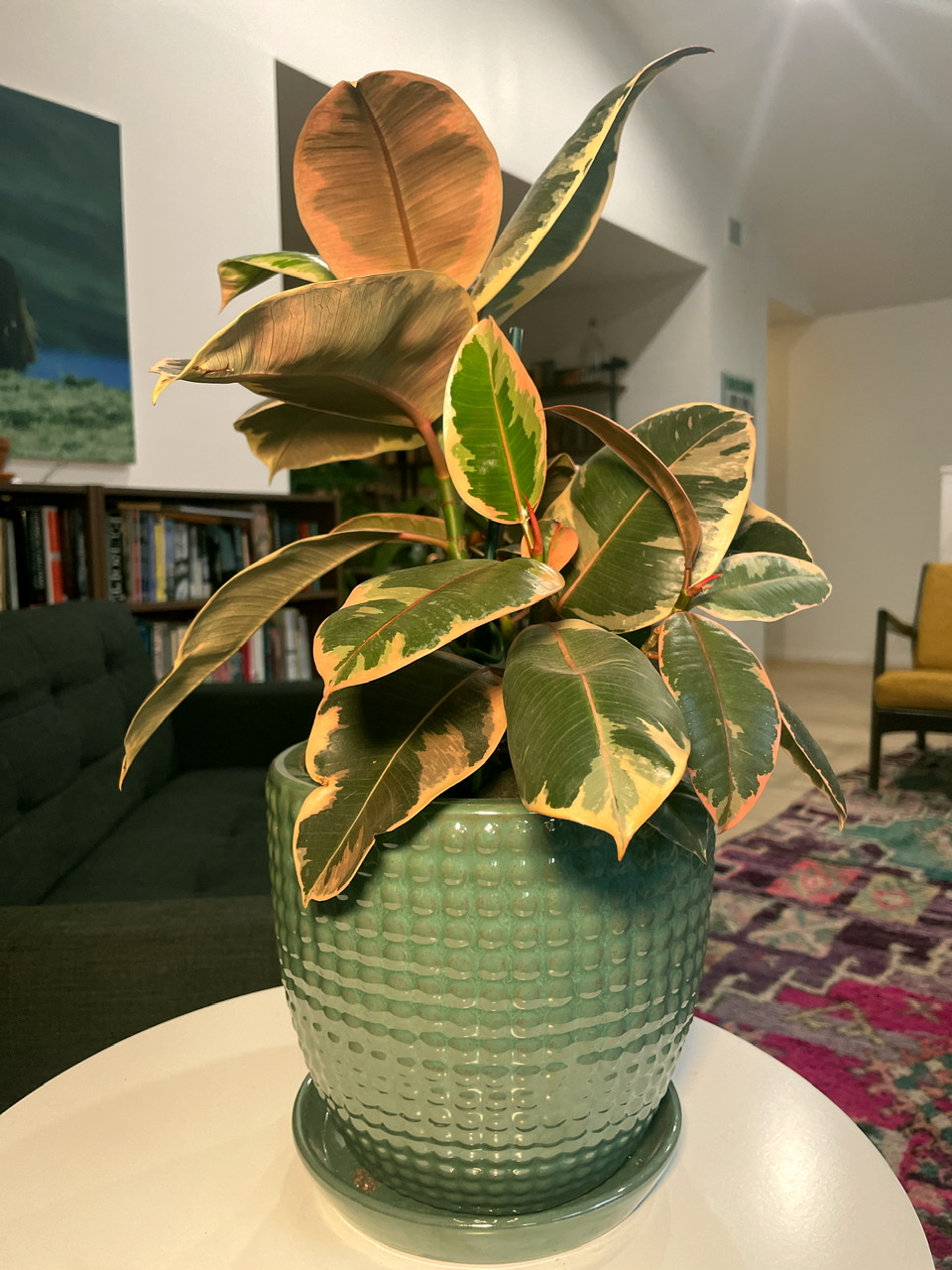
If there’s no dish, this is also kind of a pain, because you will want to move the pot into a sink or outside every time you water, to let it run out. For the clean, modern look that is popular right now, many pots don’t come with a dish even if they do have a drainage hole. I’ve been suckered into buying a few of these high-maint pots, and usually just put them in the sink to water, usually with plenty of grumbling about it being a pain in the ass.
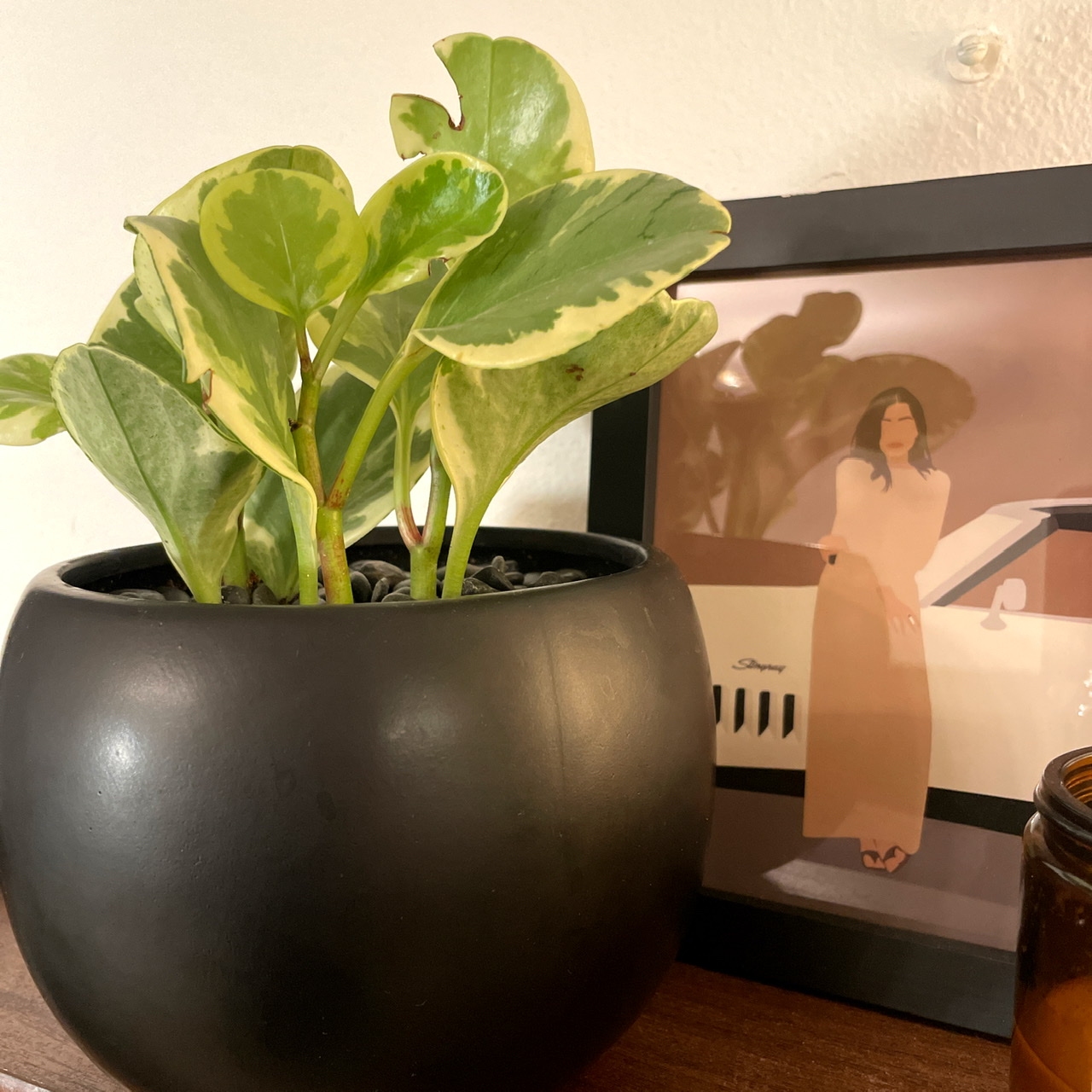
If you fall in love with a pot that has no drainage hole, here are your options, in order of most to least preferred: 1) Keep the plant in its plastic “nursery planter” and set inside the decorative pot; 2) drill a hole yourself; 3) use as-is and be meticulous about soil composition and not over-watering.
Repeat after me: “I don’t have to re-pot my plants right away.”
Soooo many problems are solved by just leaving the plant in its nursery pot, at least for a while! Seriously, I used to be a compulsive re-potter, but it’s so unnecessary. They’re usually the right size, they have drainage, and its way less stressful for the plant to get used to its new house/location before also adjusting to a new pot. I guarantee most people who come into my home admire plants without ever noticing that many aren’t even “planted” in their planters. The big Hope Philodendron featured previously on this blog? Not planted in its planter. My giant snake plant in my “office”? Not planted in its planter.
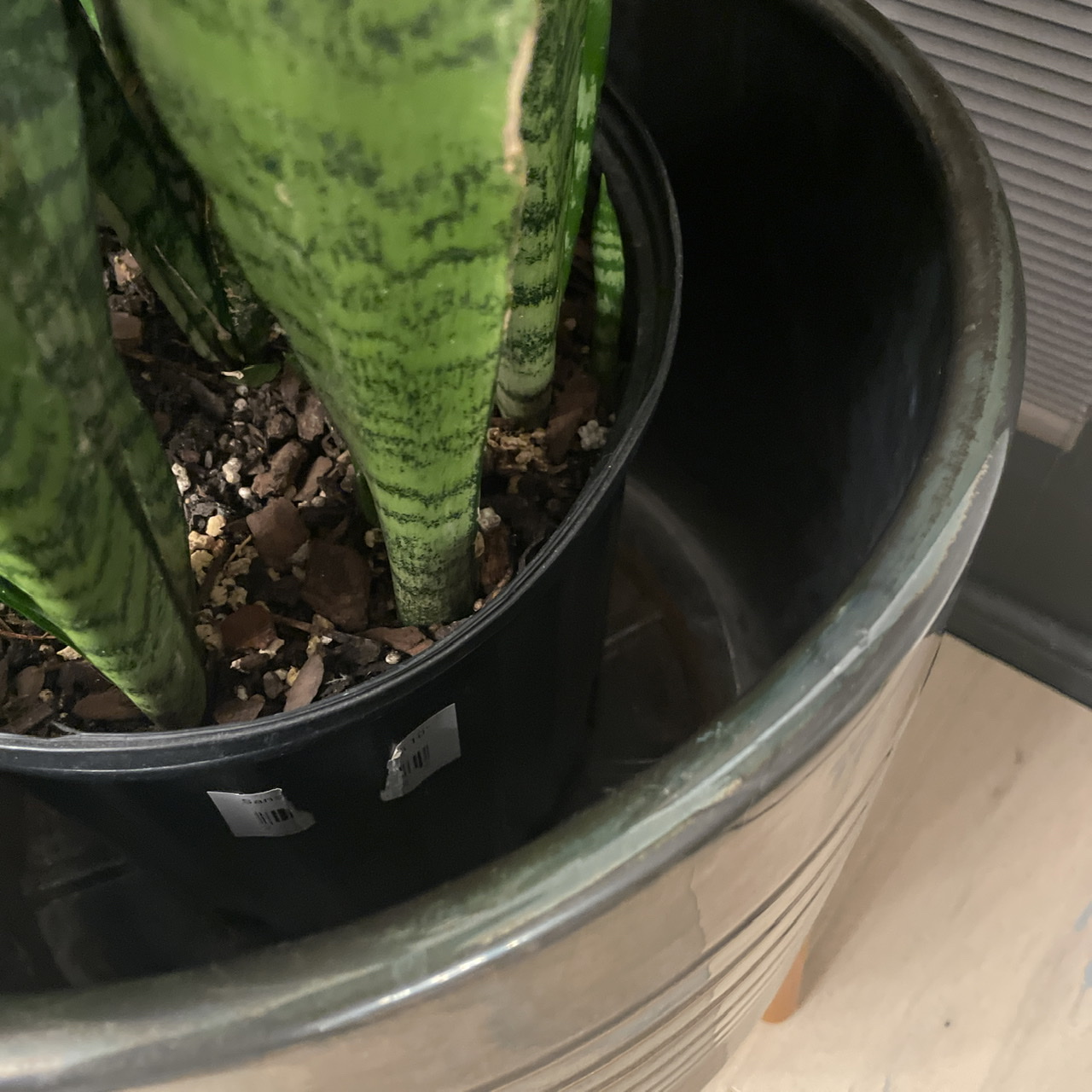
All of these are just set inside their decorative planters, usually with a plastic dish to catch extra water (if I really go nuts on the water, I might dump it out of the dish so it doesn’t stay stagnant). This lets me use whatever planter I want, without care for the drainage/dish situation.
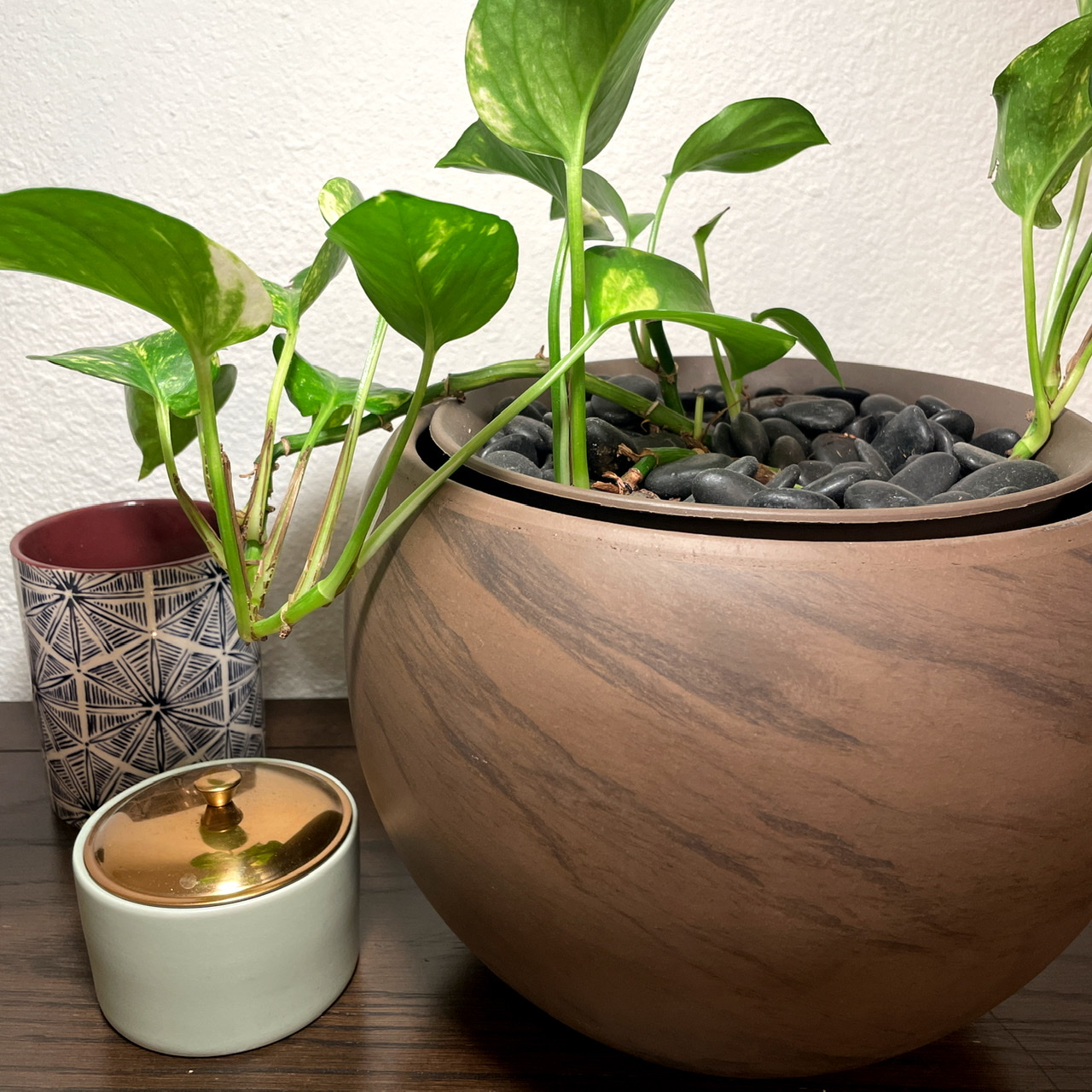
New fiddle leaf fig? Definitely not planted in its planter, even though the planter I chose actually has drainage! Why not just repot? Fiddle leaf figs are notoriously fickle (fickle fiddle leaf, say that 10 times fast) and don’t like to be messed with, so I’m happy to wait on the repotting. Plus, it’s my first time owning one and I’m not sure if the room I have it in will be sufficient light-wise. Since I buy planters to match the room they’re going in, I like that I can swap plants around easily to find the best spot in the house without worrying that it’s potted in a container that won’t match.
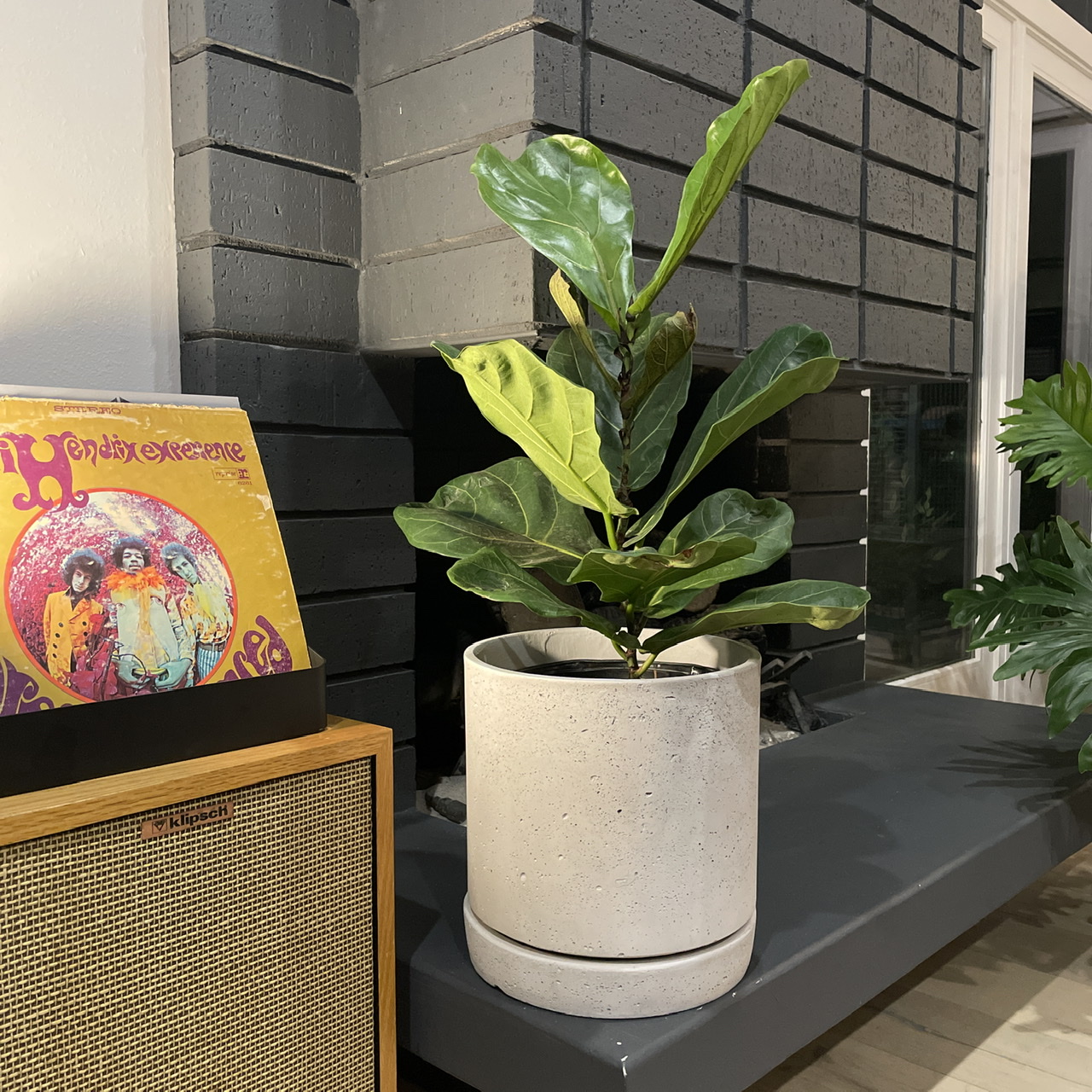
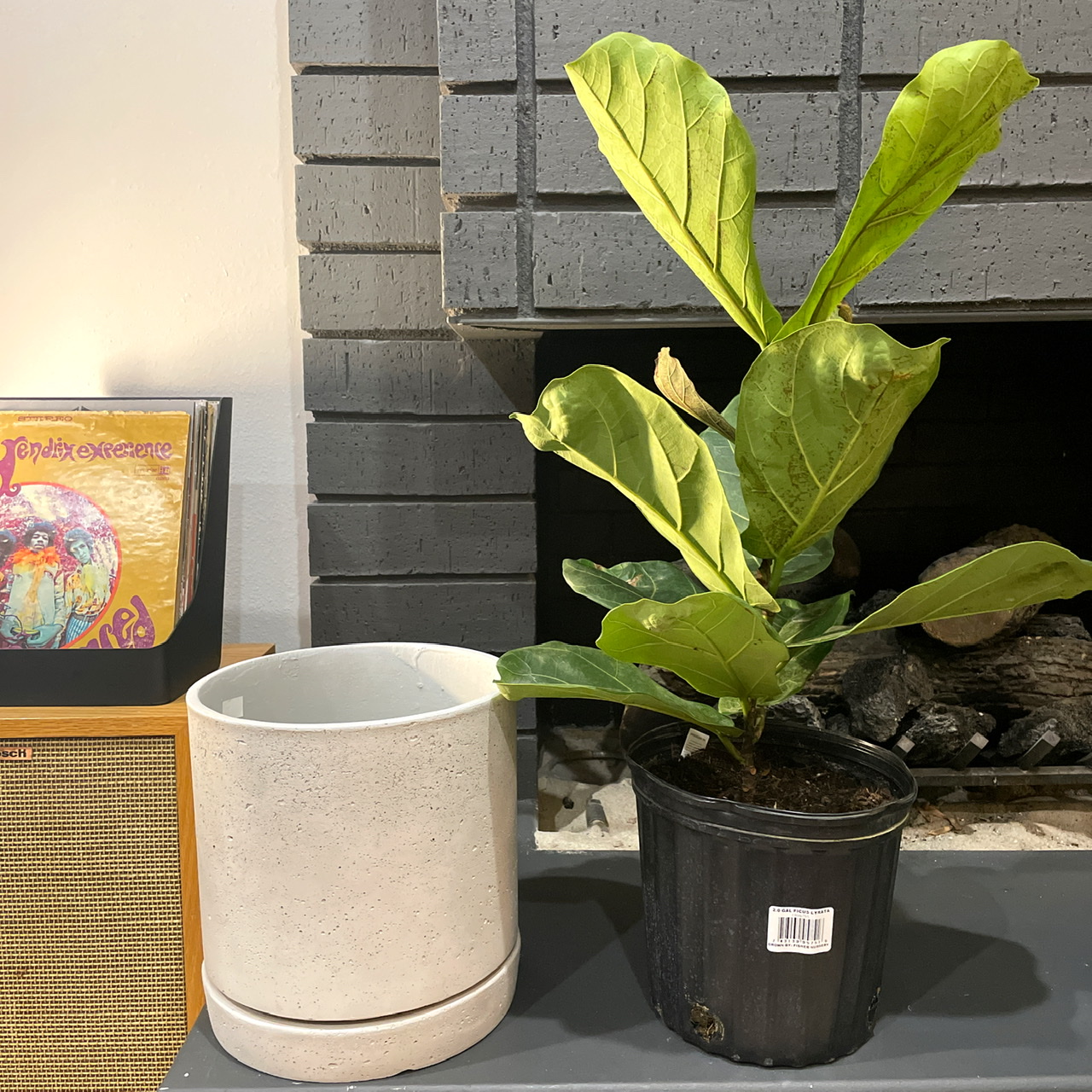
If you really want to repot into a planter with no holes, you can actually try to drill holes yourself in many ceramic pots! Attempt this at your own risk—but I have done it successfully, many times. The trick is to use a masonry drill bit (mine is 3/8” and I usually do a few holes), and to have plenty of patience! I turn the pot upside down, place on cardboard so I don’t scuff the top, and it can take a good minute or two to drill through. So far, I have a 100% success rate no broken pots!
If you don’t want to risk drilling holes, then the final option is to take a chance and just be very careful to not drown the plant. I like to live dangerously and actually even have a water-hating cactus planted in a pot with no holes! I used a good-quality cactus soil mix, plus some charcoal and Perlite added to help with extra drainage. I like to use a mix that is 2 parts soil, 1 part charcoal, 1 part Perlite. When I water, I give only the minimum and make sure not to overly saturate, and I always make sure these plants have adequate light which also protects against over-watering.
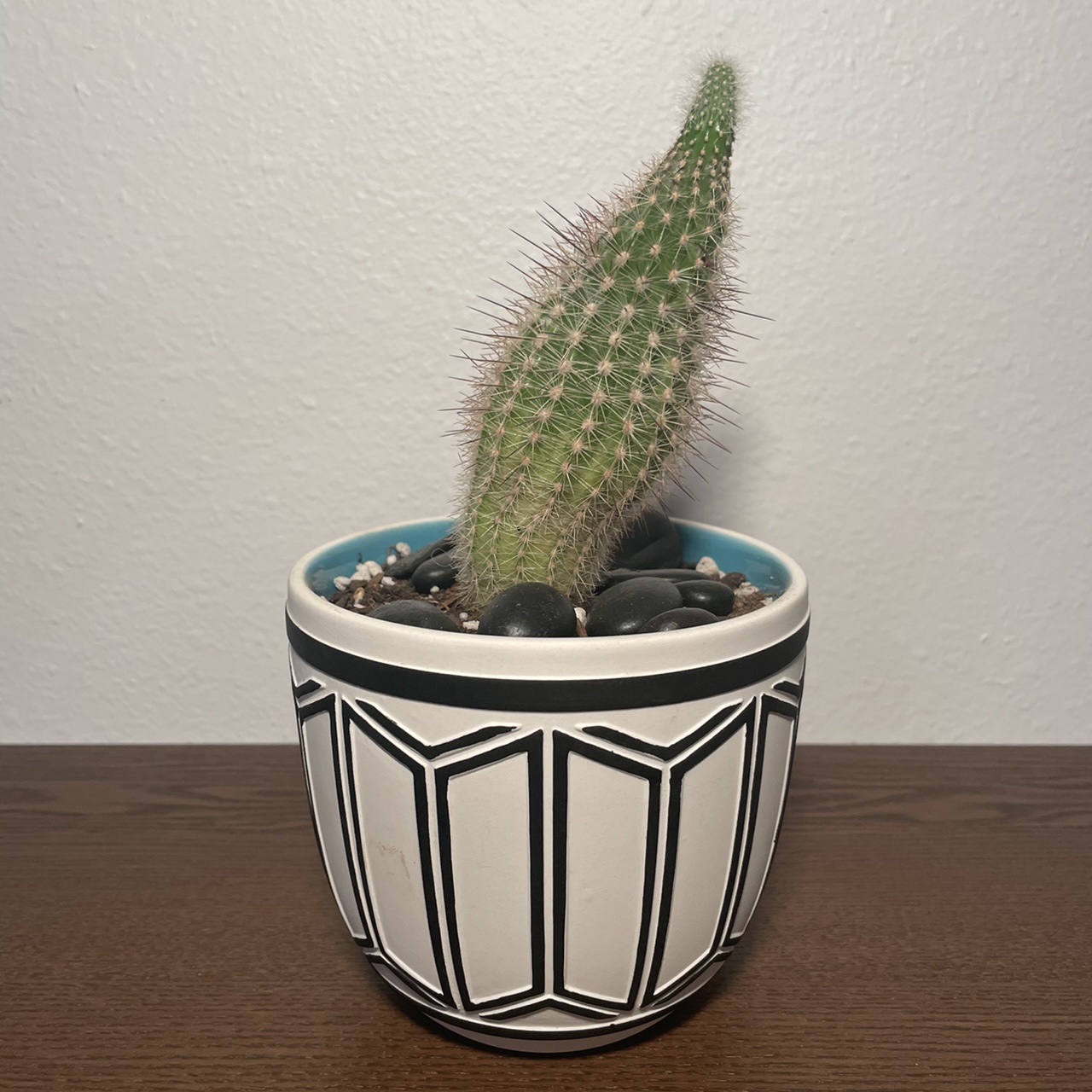
Size matters
Aside from drainage, the size of the pot is really important. Too large of a pot is recipe for overwatering and root rot. How can this be, if plants do fine planted outside with no confines? Outside, without the boundary of a pot, it is much more likely the water will dissipate through the ground, and it’s also more likely the plant has good lighting. Indoors, having an excessively large pot is recipe for water-logged soil that will rot the plant and attract pests. Do some research on the plant species to see how crowded it likes to be—snake plants love to be crowded, so these should be in a very tight pot. Others can have some more room, but as a rule of thumb I only go up in pot size by 2-3” diameter for most medium to large-sized plants, and less for small plants under 6”.
Repeat again: “I don’t have to re-pot my plants right away.”
Again, if there is a decorative pot you like that is too big, this is a great chance to be lazy and just not re-pot right away! Did I mention that not only is my office snake plant not “really” planted, but it is also in a decorative pot that is MUCH bigger than it would need to be planted in? Keeping it in the nursery planter let me avoid the pitfalls of a wrong-sized planter while also having the appearance of an oversize planter that I wanted for the room’s aesthetics. Also, get creative making the size work! I bought a beautiful Modernica planter for my Hope Philodendron, but it was bigger than I needed. So I improvised a totally janky set up with a box filled with sand to elevate the nursery planter to the right height. I’ve also used just a thin layer of sand straight into the pot to elevate to the right height for some plants.
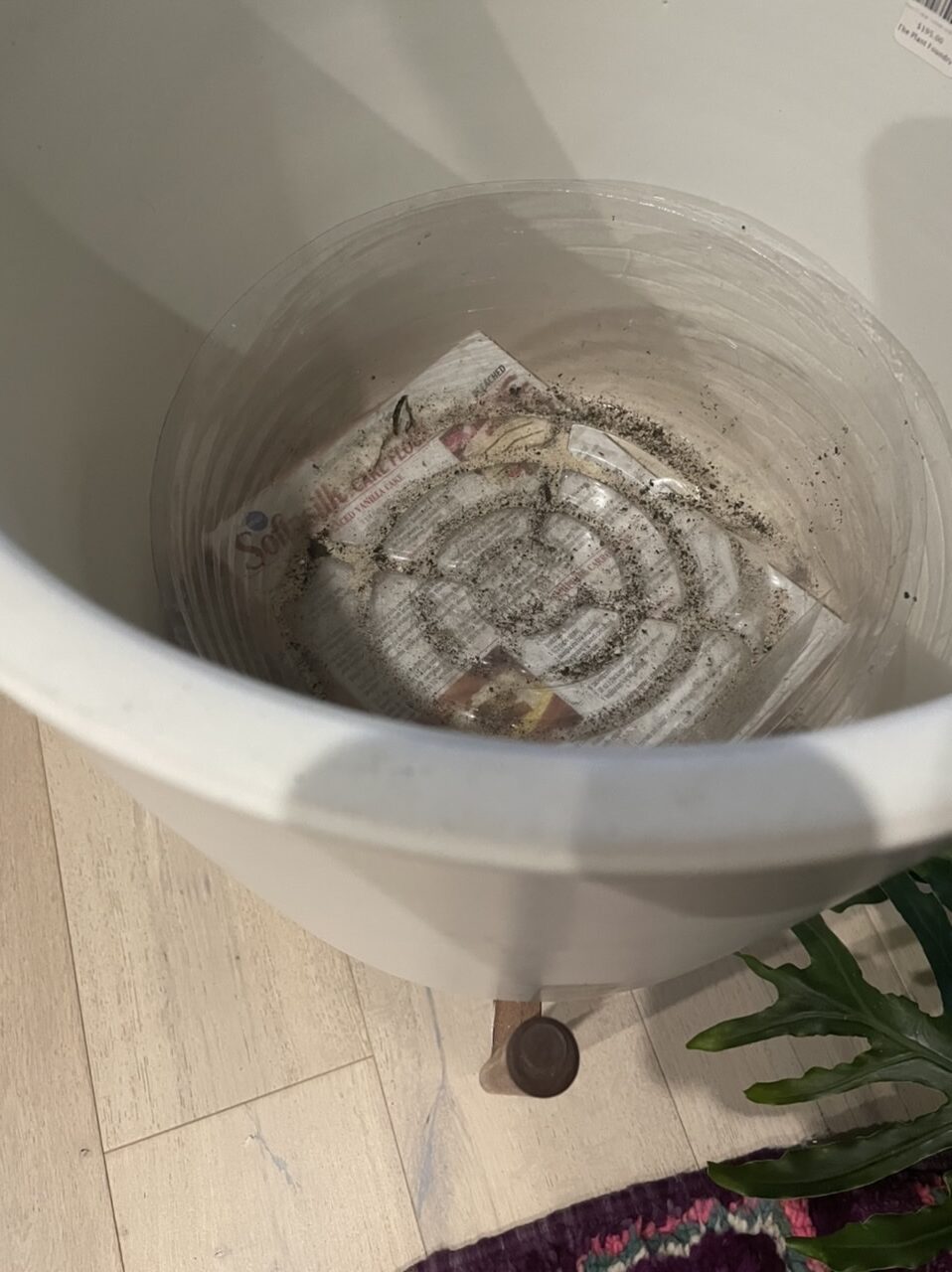
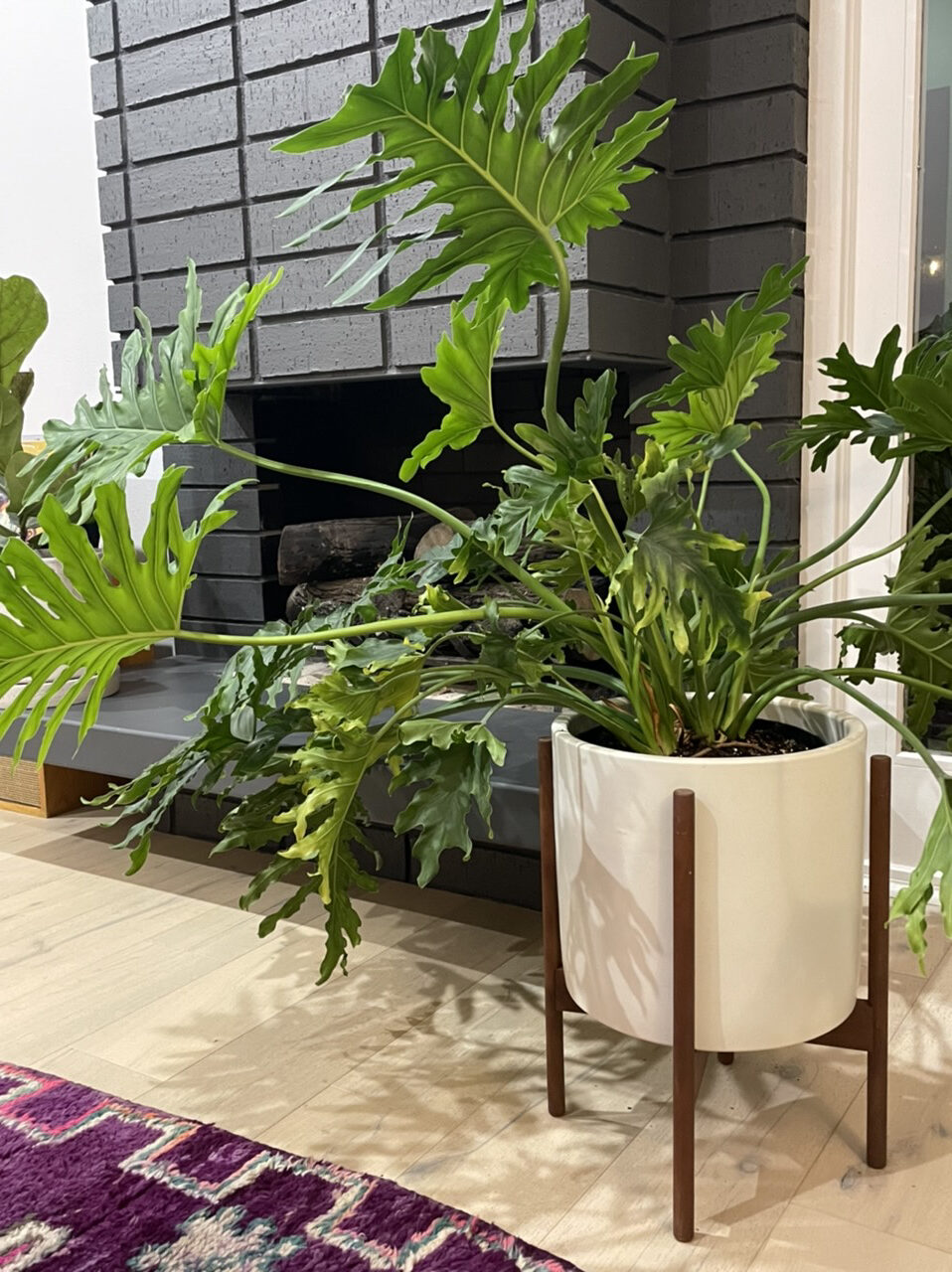
Material matters, sort of
If there’s an ideal material for an indoor planter, it’s probably terra cotta. Since it is permeable and not sealed, it helps with drainage because the water can evaporate through the planter. It’s easy to see if you over-watered because the outside will change color. And as a bonus, almost all of them have drainage and are very affordable. That being said, as much as I’ve tried to embrace the boho, mismatched terra cotta vibe, it’s just not my favorite. The pots tend to get discolored from mineral build up in the water. And the color just doesn’t fit with most of my décor. And though there are now more modern styles available, the profiles are still pretty limited and traditional. I do have my beloved Norfolk Pine in terra cotta, which was a good choice because they are hard to grow (for me at least) and I need every advantage I can get. So while not everyone’s favorite, if you have a particularly difficult plant, or if you always over water, it can be a great choice if it works for your décor!
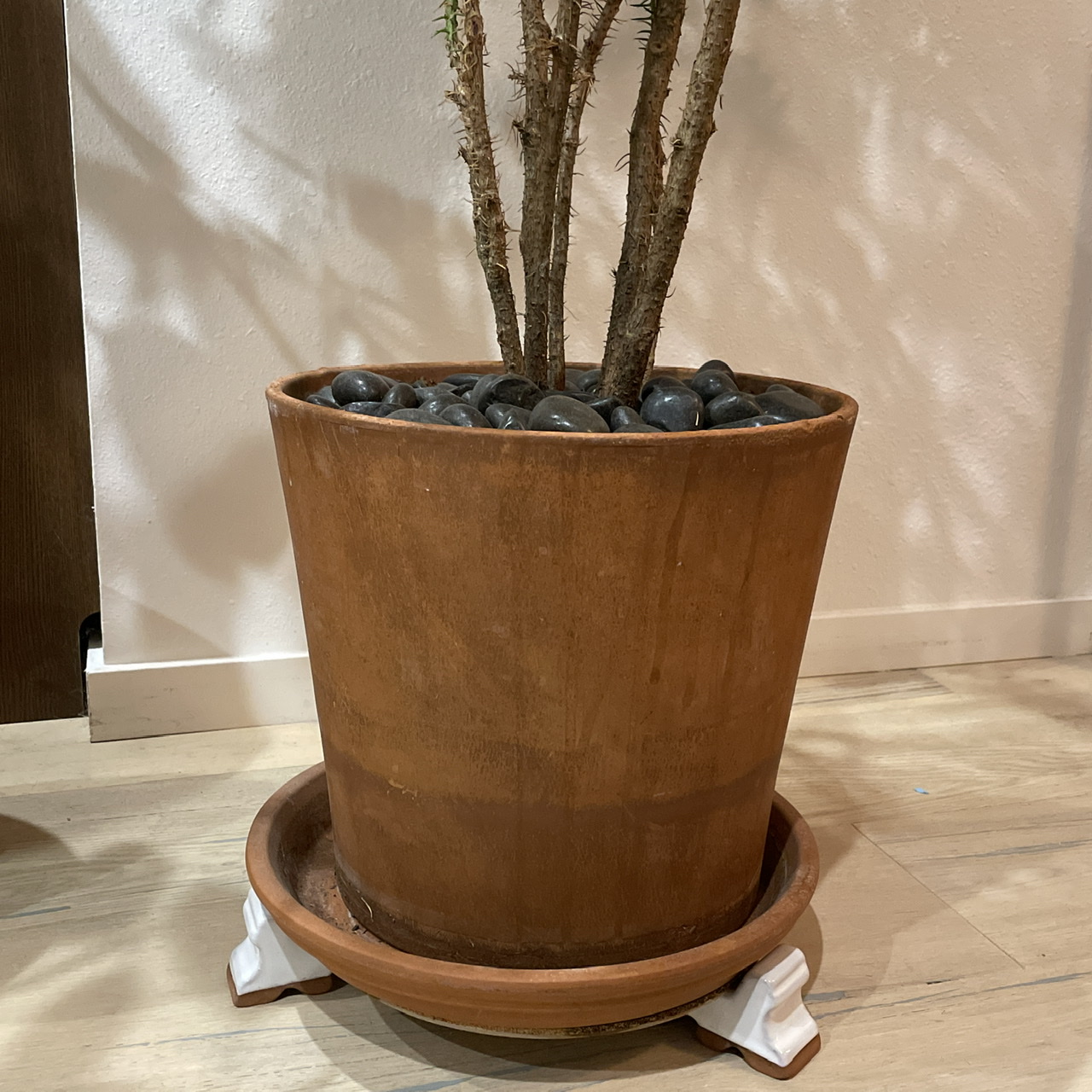
More and more, I’m seeing plant stores online with paint-by-numbers plant and planter selection—choose the plant, choose the size, choose the color planter. This is a great option if you’re starting out, or if you don’t have the time to shop around. But for me, choosing pots is almost as much fun as choosing plants! Hopefully the advice shared here will make it fun for you too, and give you some options so you can make all kinds of planters work.
